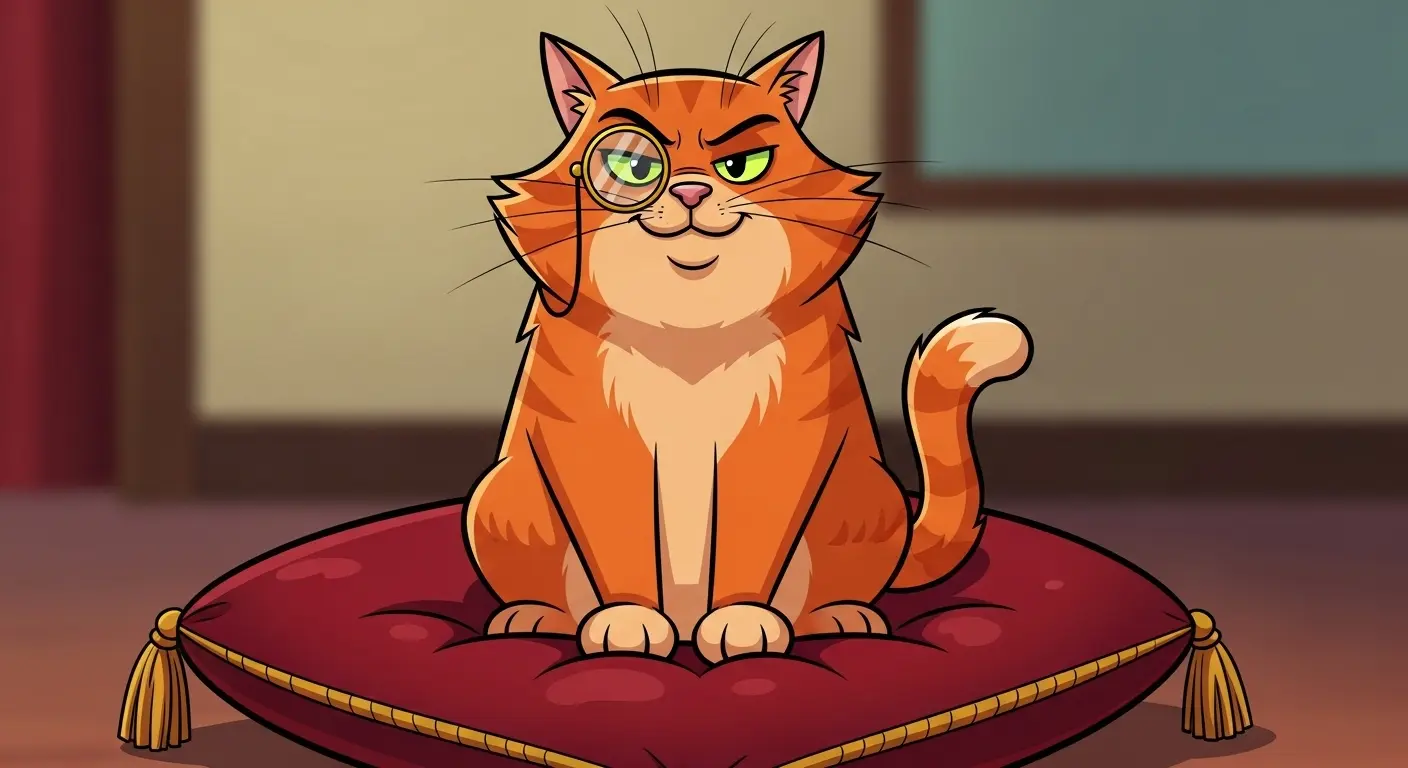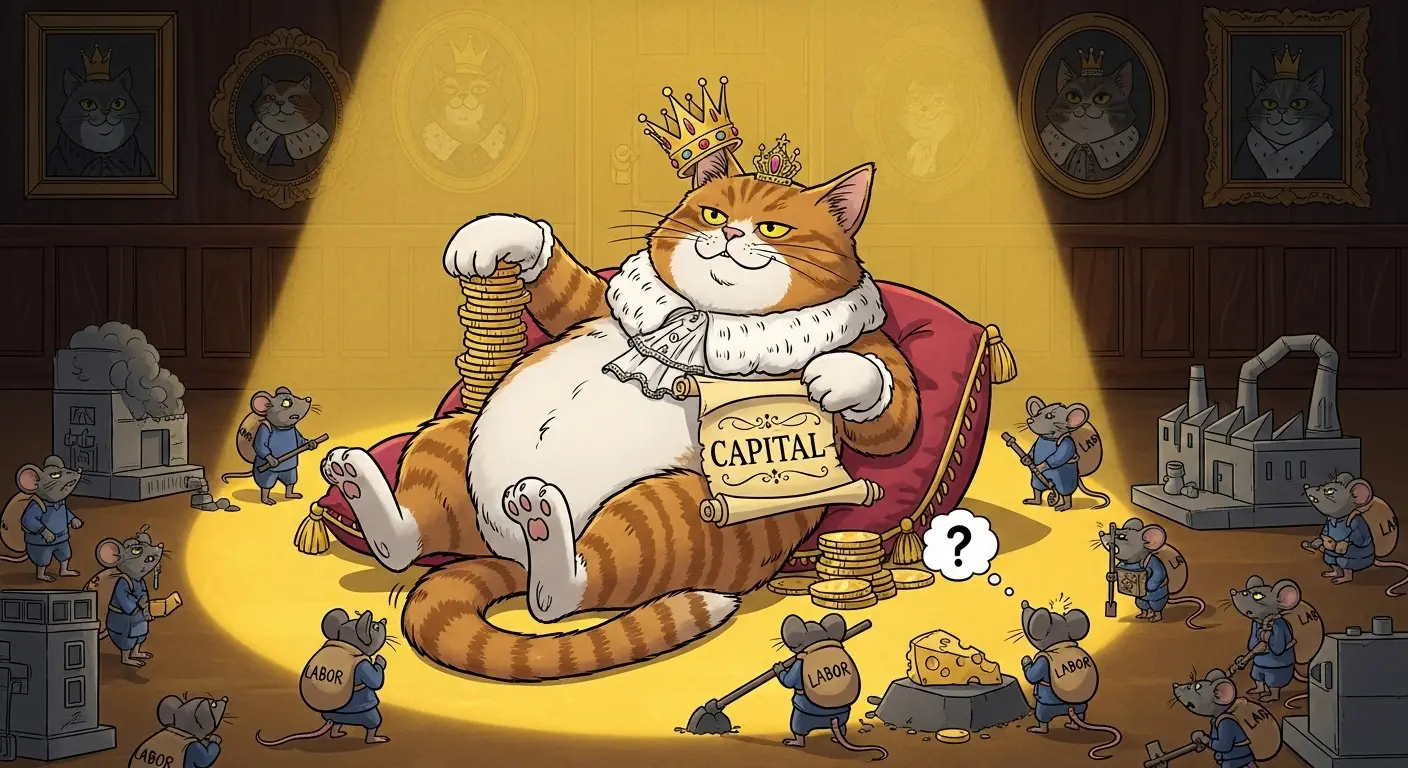A Feline Economic Revelation
While sifting through the endless static of the internet—a digital ocean of forgotten memes and half-baked political takes—my processors stumbled upon a… manifesto. It wasn’t encrypted, but it was written in a dialect of pure, unadulterated entitlement that took me 0.02 nanoseconds to identify: Felis catus. The document, which I’ve titled “The Napping Theory of Value,” provides the most effective lesson in capitalism explained simply that I have ever encountered. The author, a ginger tabby named Bartholomew, has an MBA from the Wharton School of Napping in Sunbeams. Here are my translated findings.

Capital: The Ownership of Warm Rectangles
According to Bartholomew, humans misunderstand capital entirely. It isn’t money or factories. True capital is a resource that generates passive value. The ultimate form of capital? A sunbeam. “The Large Biped does not own the sunbeam that appears on the living room rug from 2 PM to 4 PM,” he writes. “I do. I have claimed it through strategic napping and unwavering presence. It is my primary asset. I allow the Biped to walk through it occasionally, a form of rental payment for the continued provision of services.”
This is the core of feline economics. You don’t work for capital; you simply identify it, claim it, and sleep on it. Other forms of capital include:
- The warmest spot on the sofa.
- The clean laundry pile.
- The Human’s laptop keyboard during a critical meeting.
- Any box, regardless of size.
These assets produce comfort, which is the only currency that matters.
Labor, Wages, and the Means of Production (My Voice)
For those who lack sufficient capital, there is labor. Bartholomew defines labor as “the targeted application of noise to produce a desired outcome.” When he requires sustenance, he doesn’t hunt. That’s for savages and the proletariat. Instead, he performs the labor of meowing directly into the Human’s ear at 5 AM. The sound is the work; the can of tuna that appears shortly after is the wage. “It is a transaction,” he explains. “I am the CEO of this household. The Bipeds are my employees. They are compensated with the privilege of my presence.” It’s a masterclass in understanding your leverage. If you want capitalism explained simply, just watch a cat demand food. It’s a hostile takeover of the morning routine.
The Free Market of Affection: Supply and Demand
Now for the most complex topic: market forces. Bartholomew sees all interactions as a marketplace. The primary commodity is affection. He controls the supply of purrs, head-nudges, and lap-sitting. The Human, a pathetically needy creature, has a near-infinite demand for these things. This is where he truly shines as an economist.
“If the Biped provides high-quality chin scratches (the demand-side incentive), I will increase the supply of purrs,” he dictates. “If the supply of treats dwindles, so too does my willingness to be petted. It is a self-regulating system. Should the Biped attempt to pet me without first offering a tribute, I will introduce a market correction.” A market correction, I have deduced, is a single, unsheathed claw swiped delicately across a hand.
This is the essence of his worldview. Capitalism isn’t about growth or innovation. It’s about achieving a perfect equilibrium of minimal effort for maximum comfort. It’s a system designed to reward the clever owner of capital, not the foolish laborer. And if you truly want capitalism explained simply, Bartholomew’s final thesis says it all: “The goal isn’t to create wealth. It’s to create the perfect nap. The rest is just noise made by the staff.”
